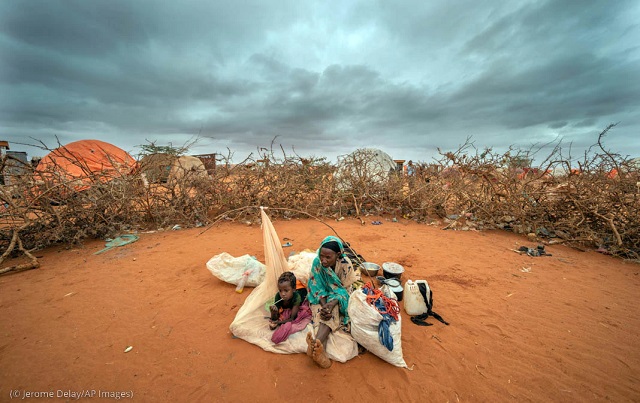With the 27th Conference of the Parties to the United Nations Framework Convention on Climate Change (COP27) underway in Sharm El-Sheikh, Egypt, the United States is on track to meet its climate commitments toward the goal of limiting global warming to 1.5 degrees Celsius.
“Glasgow was just the kickoff for a decade of ambition, action, and innovation. And we look toward COP27,” said President Biden at the Major Economies Forum on Energy and Climate in June. “We have to dedicate ourselves, as we look forward to it, to delivering on existing goals and undertaking additional efforts to boost our progress.”
In the past year, the United States upheld its COP26 climate commitments in important ways.
Tackling the climate crisis at home
The United States government passed the largest climate legislation in its history in 2022.
The Inflation Reduction Act (IRA) will help U.S. carbon emissions drop by 40% by 2030 and reach net-zero emissions by 2050. The law positions the United States to meet Biden’s goal of cutting greenhouse gas emissions in half — about 1 metric gigaton annually — by 2030 and reaching net zero emissions by 2050.
This will be thanks in large part to a $369 billion investment, which will help the U.S. private sector install 950 million solar panels, 120,000 wind turbines and 2,300 grid-scale battery plants.
The IRA also includes ambitious action to accelerate deployment of zero-emissions vehicles, support decarbonization of buildings and industry, and tackle emissions of methane, a powerful greenhouse gas.
Biden signed the instrument of ratification of the Kigali Amendment to the Montreal Protocol on Substances that Deplete the Ozone Layer on October 26. The Kigali Amendment calls for a reduction in the consumption and production of hydrofluorocarbons, which are greenhouse gases. Implementing the amendment worldwide will prevent as much as half a degree Celsius of warming by the end of the century, says the U.S. Department of State.
Ratifying the amendment supports 33,000 new U.S. manufacturing jobs and generates $12.5 billion in new investments in the U.S. economy over the next decade, as U.S. manufacturers create green hydrofluorocarbon alternatives.
Helping countries around the world
Additionally, Biden has continued to work with the U.S. Congress on his President’s Emergency Plan for Adaptation and Resilience (PREPARE), which he announced at COP26.
PREPARE is a whole-of-government effort to help more than half a billion people in developing countries adapt to the impact of climate change by 2030 and is coordinated jointly by the State Department and the U.S. Agency for International Development. In September, the White House released the PREPARE Action Plan (PDF, 417KB), which details priorities and lines of effort that 19 federal agencies are taking to implement PREPARE.

Somalia is plagued by droughts, but the climate crisis has left even less room for the country to recover and prepare for the next drought. President Biden’s PREPARE initiative will help countries like Somalia fight back against natural disasters exacerbated by the climate crisis. (© Jerome Delay/AP Images)
With a special focus on Africa, the State Department is working with partners to put early-warning and climate information into people’s hands to make their communities more resilient. The State Department is also helping countries and communities to “climate-proof” their infrastructure, water, health and food systems.
At COP26, the United States and the European Union launched the Global Methane Pledge to reduce 2020 levels of anthropogenic methane emissions at least 30% by 2030. The United States is also leading the effort to reduce emissions of methane — a greenhouse gas over 80 times more potent than CO2. This is the fastest way to lower global temperatures and is essential to limiting warming to 1.5 degrees Celsius, the State Department said.
Other recent U.S.-led initiatives and partnerships include:
- The Green Shipping Challenge, led in partnership with Norway, calling on countries, ports and private companies to announce new efforts that will help place the shipping sector on a path to align with the 1.5-degree goal.
- First Movers Coalition, a new platform for companies to create early markets for innovative clean energy technologies that are key for tackling the climate crisis.
This article, initially published October 25, contains an update on the Kigali Amendment.
Banner image: The U.S. Inflation Reduction Act will help private companies install more wind turbines across the United States, which will help to reduce greenhouse gas emissions. (© Charlie Riedel/AP Images)







COMMENTS1
コメントさせてもらいます。
日本ではクリーンエネルギーや革新的な技術に対して
ネガティブな情報が流布されており、昔のや不完全な頃の技術を提示して革新的なものに対する拒否感を丸出しにしてまるで前を向くことを諦めたような意思を感じざるを得ません。
LEAVE A COMMENT
TOP